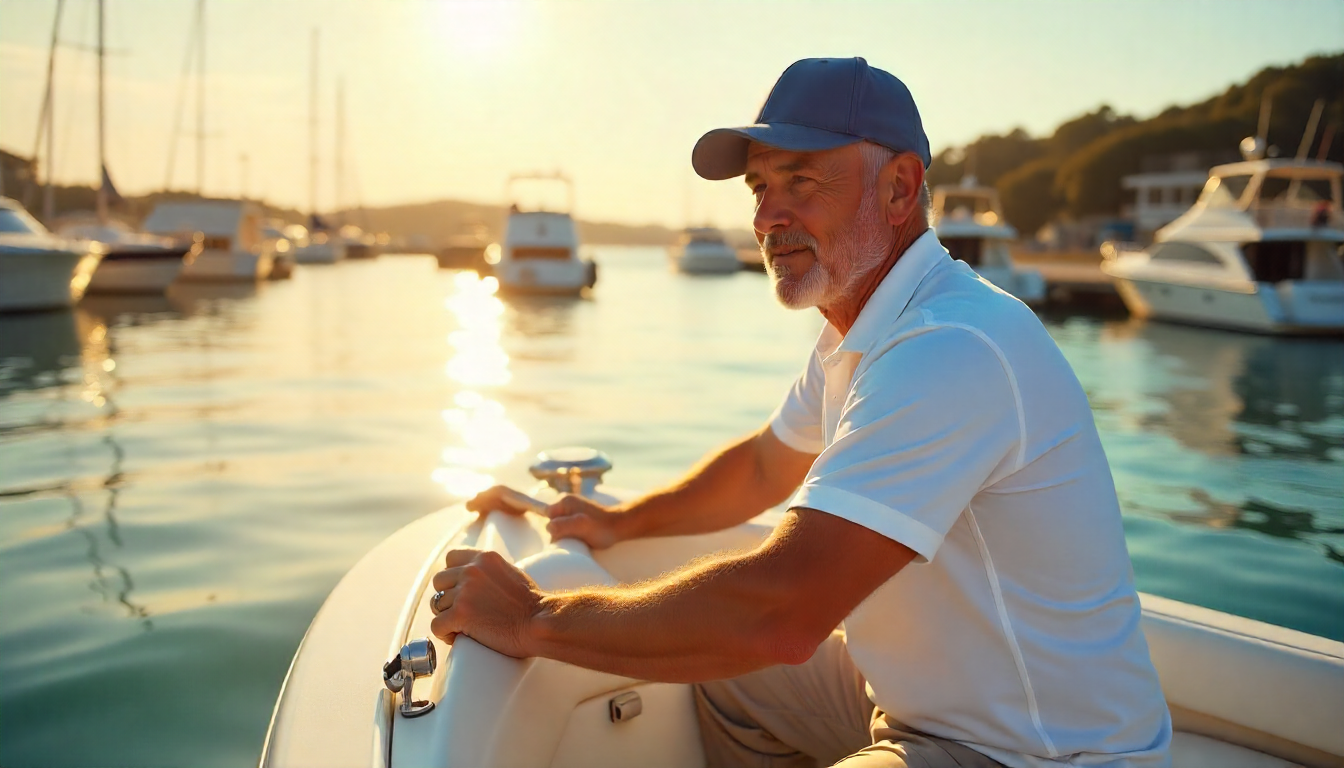Docking a boat is one of the trickiest skills for both new and experienced boaters. The best wind direction for docking a boat plays a critical role in keeping control, reducing risks, and ensuring a smooth approach. Since wind conditions can change quickly, understanding how direction affects maneuvering makes docking safer and more predictable. This guide explores how different wind conditions impact your boat, the techniques to use, and professional tips for docking with confidence.
Why the Best Wind Direction for Docking a Boat Matters
When approaching a dock, even a light wind may alter your angle. A strong wind can push your boat away from the dock or cause the stern to swing out. The best wind direction for docking a boat depends on whether the wind blows toward or away from the dock. With the right strategy, you can use the wind to help push your boat gently towards the dock, making it easier to secure lines.
Understanding Wind Direction and Its Effect on Docking
How Wind Direction Impacts Control
Wind direction affects docking more than most boaters realize. A head-on wind helps slow forward momentum, while a crosswind can push against your boat, forcing constant corrections. Learning to anticipate how wind conditions impact your hull allows for smoother docking.
Docking with Different Wind Conditions
In different wind conditions, control and timing become crucial. A tailwind may increase speed, reducing control. A crosswind requires more precise steering, since the wind blows across the boat, shifting its angle. To dock safely, always consider how these conditions affect your approach.
The Best Approaches to Docking with Different Wind Directions
Docking When the Wind Blows Towards the Dock
When the wind direction is towards the dock, you gain a natural advantage. The wind may help push your boat against the dock, reducing the need for throttle adjustments. However, approach slowly, as too much forward momentum can cause the bow to impact the dock.
Docking When the Wind Blows Away from the Dock
A wind direction blowing away from the dock creates one of the most challenging docking conditions. You’ll need to maintain extra speed to keep your boat towards the dock while avoiding a hard impact. Strategic use of lines helps secure the stern and bow before the wind pushes your boat off.
Docking with a Crosswind
Crosswinds are common and demand constant maneuver adjustments. Since the wind blows across the hull, the stern or bow may swing unexpectedly. Keeping low speed and using fenders helps reduce the effect, giving you time to correct direction as you dock.
Practical Techniques for Docking a Boat in Different Conditions
Use the Wind to Your Advantage
Instead of fighting the wind, skilled boaters use the wind to assist docking. For example, in strong wind conditions blowing towards the dock, ease the throttle and let the breeze help push your boat into place.
Correcting for Different Wind
When docking in different wind directions, small adjustments matter. Short bursts of throttle and steering corrections help maintain control. With practice, you’ll learn how to anticipate how different wind conditions will impact your boat.
Relying on Crew and Lines
Your crew plays a vital role when docking in challenging conditions. Assign someone to secure a bow line first, then adjust stern lines to keep balance. Lines prevent the wind from pushing your boat too far, especially when docking against a crosswind.
Step-by-Step Guide: Docking in Challenging Wind
- Assess wind conditions before approaching.
- Plan your approach considering wind direction and strength.
- Approach slowly, keeping the bow slightly into the wind.
- Use fenders along the hull to absorb minor impacts.
- Assign crew to handle lines quickly.
- Allow the wind to help push your boat when possible.
- Adjust throttle and steering as needed to maintain control.
Common Mistakes Boaters Make While Docking
- Approaching the dock too quickly in strong wind.
- Ignoring crosswind effects on the stern.
- Not assigning crew to secure lines immediately.
- Relying on power instead of letting wind push your boat in place.
- Failing to consider different wind conditions before docking.
Additional Tips for Safer Docking
- Always approach at a controlled speed.
- Keep forward momentum low but steady.
- Position fenders along the hull before entering the dock slip.
- Practice docking your boat in different conditions to gain confidence.
- Remember that even light wind may impact your boat’s angle.
How Different Wind Conditions Affect Boat Types
Smaller Boats
Light boats feel the effect of wind conditions quickly. They require constant corrections since wind blows them across the dock more easily.
Larger Boats
Heavier boats resist minor wind directions but can still swing when strong wind pushes against your boat. Maneuvering such boats requires anticipation and a wider turning radius.
Expert Insights: Docking in Strong Wind
Professional captains suggest always docking bow-first when possible in strong wind. This approach helps maintain control since the bow responds better to steering adjustments. They also recommend using spring lines, which keep boats secure while docking in different conditions.
Practicing Docking for Confidence
Docking is a skill improved only through repetition. To become proficient:
- Practice in light wind before attempting strong wind conditions.
- Try docking in different wind directions to understand their effect.
- Use both open docks and slips for varied experiences.
- Take note of how your boat responds, since each hull reacts differently.
Conclusion: Mastering Docking Through Wind Awareness
The best wind direction for docking a boat depends on your skill, conditions, and the dock’s layout. While docking challenges increase in different wind conditions, understanding direction and anticipating the wind’s effect helps you maintain control. With practice, patience, and the right techniques, you’ll learn to let the wind help push your boat towards the dock instead of fighting against it.


